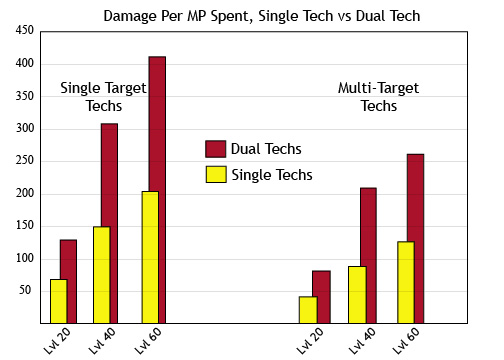The Strengths and Weaknesses of Chrono Trigger
The Problems of Audience
Chrono Trigger is a game designed for a very wide audience. In the mid 90s, Squaresoft knew that they had the talent, resources, and market position to begin making JRPGs for people who didn’t ordinarily play them. As such, most of the strengths and weaknesses of the game arise out of a desire to include an audience who had varying levels of JRPG experience. The most obvious result of this design philosophy is that the game is easy. To experienced players, the game is too easy. (If the last JRPG you played before this was Final Fantasy V or something of that era, Chrono Trigger is laughably easy.) To new or casual players of JRPGs, the game is moderately difficult with most of the challenges coming at the major boss fights. There’s no real case of “that one boss” or “that one level” that can’t be solved by any conventional strategy. Players will see the game over screen once in a while, and that’s intentional, but there’s just no part of the game at which they’re likely to get stuck. The mechanical cause of this ease is the abundance of powerful, cheap dual techs. As a rule, dual techs are both more powerful than the sum of their component abilities. For example, if the player decided to cast Fire 2 and Confuse while his characters are at level 40, the combined damage those two skills is about 1943 points. Fire Sword 2, the product of those two abilities as a dual tech, deals about 3240 damage. The same is true for single-target spells that become multi-target as a dual tech. At level 20, Marle’s Ice and Frog’s Water spells would deal a little over 300 points of damage, but only against one target. The product of those two spells, Ice Water, would do the exact same damage to any number of enemies on the screen, potentially netting as much as 1800 damage in a single cast for the same amount of MP total.[21]
Below is a graph detailing the average damage per MP spent for dual techs versus single techs at levels 20, 40, and 60.

As I mentioned before, the place where the power of dual techs stops making the game easy is in the Black Omen. The enemies there have so much HP that normal attacks are almost never a viable option, and so the power of dual techs becomes necessary rather than enormously advantageous. That’s only one dungeon, though, and it’s the last one. The question is, what alternative did the designers have in making Chrono Trigger more difficult? Bosses in the Comedy of the Sages are a bit harder than those in the Tragedy of the Entity, but if the common enemies in the second game suddenly became significantly more difficult, the essential voice of the game would have changed. The designers wanted the second half of their game to feel different from the first half, but not necessarily feel much harder. That’s the reason for all those exploration-style quests we see in the second game. Difficulty wasn’t the primary goal.
History has shown us what the designers would have done to make Chrono Trigger harder. The GBA version of the game has an extra challenge dungeon, full of especially difficult content. I contend that the design team could not do this for the original game, however. Part of the appeal of Chrono Trigger was that it was short, tightly-paced, and playable by a wide audience. It didn’t require grinding and didn’t punish the player with many game-over screens. That said, the idea of adding a completely optional dungeon makes sense in the greater context of 90s JRPGs, even if it didn’t fit the original voice of Chrono Trigger. Many of Chrono Trigger’s contemporaries did the same thing, even Final Fantasy VI.
Stopping to Get Directions
For the next section, I recommend also reading Reverse Design: Final Fantasy VI. That book has a much more thorough explanation of the phenomenon of NPC irony than I include here. Nevertheless, I will summarize the basic ideas before delving into the details. The next section deals with a concept called NPC irony. NPC irony is not like regular verbal irony, and understanding it as such will mislead you. NPC irony is about the designers communicating something about the gameplay to the player without breaking the narrative spell of the game. Anytime an NPC communicates something essential about the gameplay, like where a key quest objective is found, that’s a form of NPC irony—provided that the NPC does it “in character.” Generally, NPC irony breaks down into three categories. Direction is a clear message from the designer to the player about what to do in the game. Allusion is a puzzle or riddle that tells the player what to do, but leaves some key component out, forcing the player to figure things out on his or her own. Condition is a message about the interactive status of an in-game affordance. That’s a bit jargon-y, but we’ll come back to conditions because they’re magnificently done in Chrono Trigger.
Want to read more? The rest of this section can be found in the print and eBook versions. In fact, the print version of this book has been significantly expanded and revised.
Next - Patterns of Evolution and Expansion in Chrono Trigger